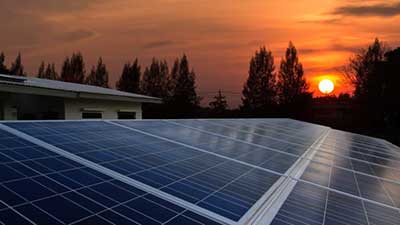Relevance: GS-3: Infrastructure: Energy, Ports, Roads, Airports, indigenization of technology and developing new technology.
Key Phrases: Compounded annual growth rate, cumulative solar installed, pandemic, rooftop solar, Financing issues, power generation, consumer awareness, grid tariffs, off-grid projects.
Why in News?
- A report, jointly prepared by two energy-research firms JMK Research and Analytics and the Institute for Energy Economics and Financial Analysis says India will likely miss its 2022 target of installing 100 gigawatts (GW) of solar power capacity.
What is India’s solar policy?
- Since 2011, India’s solar sector has grown at a compounded annual growth rate (CAGR) of around 59% from 0.5GW in 2011 to 55GW in 2021.
- The Jawaharlal Nehru National Solar Mission (JNNSM), also known as the National Solar Mission (NSM), which commenced in January 2010, marked the first time the government focused on promoting and developing solar power in India.
- Under the scheme, the total installed capacity target was set as 20GW by 2022. In 2015, the target was revised to 100GW and in August 2021, the government set a solar target of 300GW by 2030.
- India currently ranks fifth after China, U.S., Japan and Germany in terms of installed solar power capacity.
- As of December 2021, the cumulative solar installed capacity of India is 55GW, which is roughly half the renewable energy (RE) capacity (excluding large hydro power) and 14% of the overall power generation capacity of India.
- Within the 55GW, grid-connected utility-scale projects contribute 77% and the rest comes from grid-connected rooftop and off-grid projects.
What does the report say?
- As of April, only about 50% of the 100GW target, consisting of 60GW of utility-scale and 40GW of rooftop solar capacity, has been met.
- Nearly 19 GW of solar capacity is expected to be added in 2022 — 15.8GW from utility-scale and 3.5GW from rooftop solar.
- Even accounting for this capacity would mean about 27% of India’s 100GW solar target would remain unmet.
- A 25GW shortfall in the 40GW rooftop solar target, is expected compared to 1.8GW in the utility-scale solar target by December 2022.
- Thus, it is in rooftop solar that the challenges of India’s solar-adoption policy stick out.
Do you know?
- The International Solar Alliance (ISA) is a treaty based international inter-governmental alliance of 121 solar resource rich countries lying fully or partially between the Tropics of Cancer and Capricorn which was established in 2015.
- The ISA is headquartered in Gurugram, India.
- Gujarat is the topmost state in total rooftop solar installations.
- Rajasthan has topped in installed capacity of solar energy in India with 7737.95MW as per the state-wise report released by the Ministry of New and Renewable Energy (MNRE).
What are the reasons for rooftop solar adoption not meeting targets?
- The disruption in supply chains due to the pandemic was a key impediment to rooftop solar adoption.
- In its early years, India’s rooftop solar market struggled to grow, held back by lack of consumer awareness, inconsistent policy frameworks of the Centre/ State governments and financing.
- Factors impeding rooftop-solar installation include pandemic-induced supply chain disruption to policy restrictions,
- Regulatory roadblocks;
- Limits to net-metering (or paying users who give back surplus electricity to the grid);
- Taxes on imported cells and modules,
- Unsigned power supply agreements (PSAs) and banking restrictions;
- Financing issues plus delays in or rejection of open access approval grants;
- The unpredictability of future open access charges.

How critical is solar power to India’s commitment to mitigate climate change?
- Solar power is a major prong of India’s commitment to address global warming according to the terms of the Paris Agreement, as well as achieving net zero, or no net carbon emissions, by 2070.
- Prime Minister at the United Nations Conference of Parties meeting in Glasgow, in November 2021, said India would be reaching a non-fossil fuel energy capacity of 500 GW by 2030 and meet half its energy requirements via renewable energy by 2030.
- To boost the renewable energy installation drive in the long term, the Centre in 2020 set a target of 450GW of RE-based installed capacity to be achieved by 2030, within which the target for solar was 300GW.
- Given the challenge of integrating variable renewable energy into the grid, most of the RE capacity installed in the latter half of this decade is likely to be based on wind solar hybrid (WSH), RE-plus-storage and round-the-clock RE projects rather than traditional solar/wind projects, according to the report.
- On the current trajectory, the report finds, India’s solar target of 300GW by 2030 will be off the mark by about 86GW, or nearly a third.
- It is expected that the government, in the short-term, will aggressively push for expediting solar capacity addition to achieve the 100GW target by 2022 by re-allocating some of the unmet rooftop targets to utility-scale projects.
Conclusion
- Recently, there has been a sharp rise in rooftop solar installations thanks to falling technology costs, increasing grid tariffs, rising consumer awareness and the growing need for cutting energy costs.
- Going ahead, rooftop solar adoption is expected to proportionally increase as land and grid-connectivity for utility solar projects are expected to be hard to come by.
Sources: The Hindu
Mains Question
Q. How far has India come with respect to solar power generation and storage? Critically examine (250 Words).









